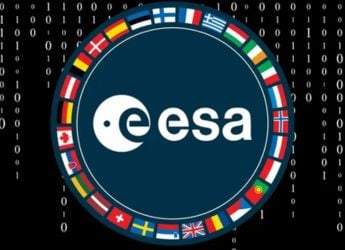- Home
- Science
- Science News
- More Than 100 Parts for NASA's Orion Capsule to Be 3D Printed
More Than 100 Parts for NASA's Orion Capsule to Be 3D Printed
More than 100 parts for US space agency NASA's deep-space capsule Orion will be made by 3D printers, using technology that experts say will eventually become key to efforts to send humans to Mars.
US defence contractor Lockheed Martin, 3D printing specialist Stratasys, and engineering firm PADT have developed the parts using new materials that can withstand the extreme temperatures and chemical exposure of deep space missions, Stratasys said on Tuesday.
"In space, for instance, materials will build up a charge. If that was to shock the electronics on a space craft there could be significant damage," Scott Sevcik, Vice President Manufacturing Solutions at Stratasys told Reuters.
3D printing, or additive manufacturing, has been used for making prototypes across a range of different industries for many years, but is being increasingly eyed for scale production.
The technology can help make light-weight parts made of plastics more quickly and cheaply than traditional assembly lines that require major investments into equipment.
"But even more significant is that we have more freedom with the design... parts can look more organic, more skeletal," Sevcik said.
Stratasys's partner Lockheed Martin said the use of 3D printing on the Orion project would also pay off at other parts of its business.
"We look to apply benefits across our programs - missile defence, satellites, planetary probes, especially as we create more and more common products," said Brian Kaplun, additive manufacturing manager at Lockheed Martin Space.
Orion is part of NASA's follow-up program to the now-retired space shuttles that will allow astronauts to travel beyond the International Space Station, which flies about 260 miles (420 km) above Earth.
The agency's European counterpart, ESA, has suggested that moon rock and Mars dust could be used to 3D print structures and tools, which could significantly reduce the cost of future space missions because less material would need to be brought along from Earth
© Thomson Reuters 2018
Catch the latest from the Consumer Electronics Show on Gadgets 360, at our CES 2026 hub.
Related Stories
- Samsung Galaxy Unpacked 2025
- ChatGPT
- Redmi Note 14 Pro+
- iPhone 16
- Apple Vision Pro
- Oneplus 12
- OnePlus Nord CE 3 Lite 5G
- iPhone 13
- Xiaomi 14 Pro
- Oppo Find N3
- Tecno Spark Go (2023)
- Realme V30
- Best Phones Under 25000
- Samsung Galaxy S24 Series
- Cryptocurrency
- iQoo 12
- Samsung Galaxy S24 Ultra
- Giottus
- Samsung Galaxy Z Flip 5
- Apple 'Scary Fast'
- Housefull 5
- GoPro Hero 12 Black Review
- Invincible Season 2
- JioGlass
- HD Ready TV
- Laptop Under 50000
- Smartwatch Under 10000
- Latest Mobile Phones
- Compare Phones
- Tecno Spark Go 3
- iQOO Z11 Turbo
- OPPO A6c
- Samsung Galaxy A07 5G
- Vivo Y500i
- OnePlus Turbo 6V
- OnePlus Turbo 6
- Itel Zeno 20 Max
- Lenovo Yoga Slim 7x (2025)
- Lenovo Yoga Slim 7a
- Lenovo Idea Tab Plus
- Realme Pad 3
- Garmin Quatix 8 Pro
- NoiseFit Pro 6R
- Haier H5E Series
- Acerpure Nitro Z Series 100-inch QLED TV
- Asus ROG Ally
- Nintendo Switch Lite
- Haier 1.6 Ton 5 Star Inverter Split AC (HSU19G-MZAID5BN-INV)
- Haier 1.6 Ton 5 Star Inverter Split AC (HSU19G-MZAIM5BN-INV)

















